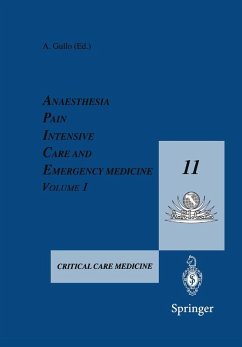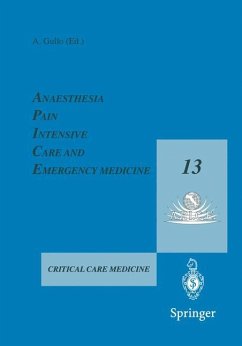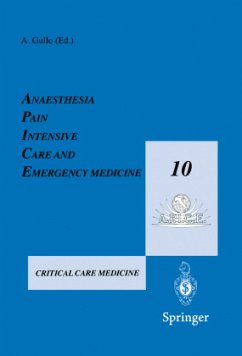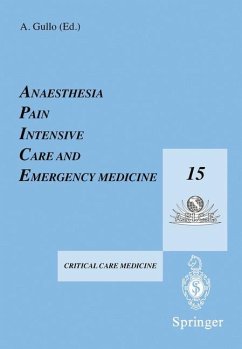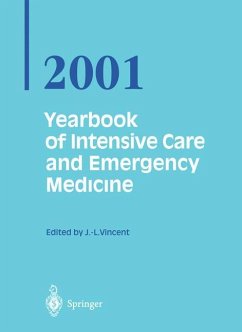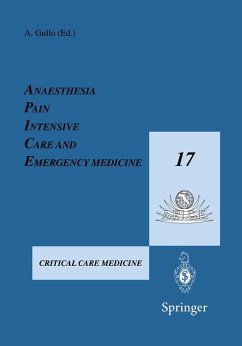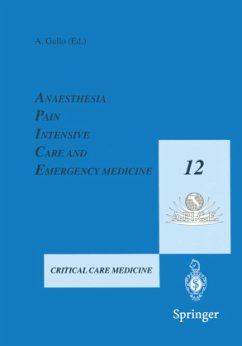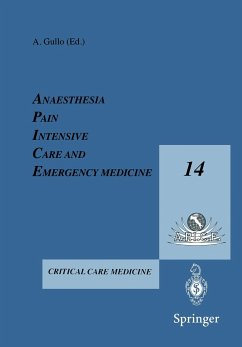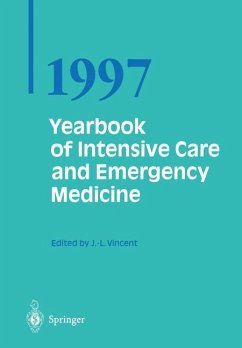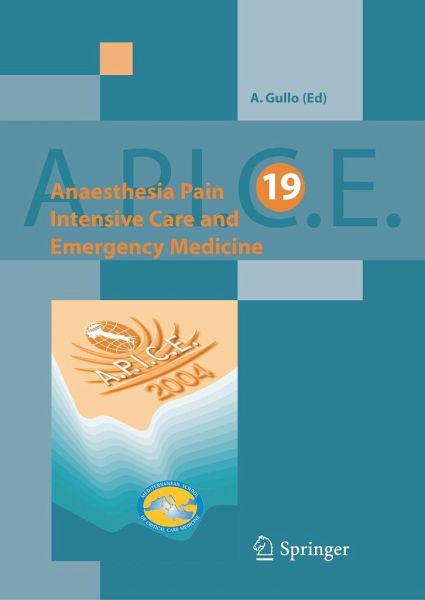
Anaesthesia, Pain, Intensive Care and Emergency Medicine - A.P.I.C.E.
Proceedings of the 19 th Postgraduate Course in Critical Care Medicine. Trieste, Italy - November 12-15, 2004
Herausgegeben: Gullo, A.

PAYBACK Punkte
58 °P sammeln!
In modern medicine the most functional methodologies are taking an increasing importance in spreading informations, rendering it credible while at the same time using reliable data to focus interaction between basic science and clinical medicine. Critical care medicine embraces these needs and more than any other discipline thrives and develops thanks to interdisciplinary contact.APICE 2004 has been organised to provide precise answers to these issues. In particular, considerable emphasis has been given to the reviews regarding the most important aspects - or the most significant clinical deve...
In modern medicine the most functional methodologies are taking an increasing importance in spreading informations, rendering it credible while at the same time using reliable data to focus interaction between basic science and clinical medicine. Critical care medicine embraces these needs and more than any other discipline thrives and develops thanks to interdisciplinary contact.
APICE 2004 has been organised to provide precise answers to these issues. In particular, considerable emphasis has been given to the reviews regarding the most important aspects - or the most significant clinical developments - in the sectors involving variety of functions: neurological, respiratory and cardiovascular, gastrointestinal, metabolism and perfusion; trauma infections, sepsis and organ failure; perioperative medicine and life support techniques; information technology dedicated to clinical medicine, but also as a means of information and education. The contributing authors are all part of leading research groups at the international level in the various sectors presented in the volume.
APICE 2004 has been organised to provide precise answers to these issues. In particular, considerable emphasis has been given to the reviews regarding the most important aspects - or the most significant clinical developments - in the sectors involving variety of functions: neurological, respiratory and cardiovascular, gastrointestinal, metabolism and perfusion; trauma infections, sepsis and organ failure; perioperative medicine and life support techniques; information technology dedicated to clinical medicine, but also as a means of information and education. The contributing authors are all part of leading research groups at the international level in the various sectors presented in the volume.





